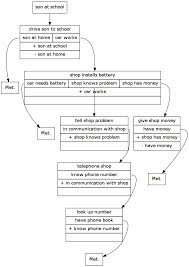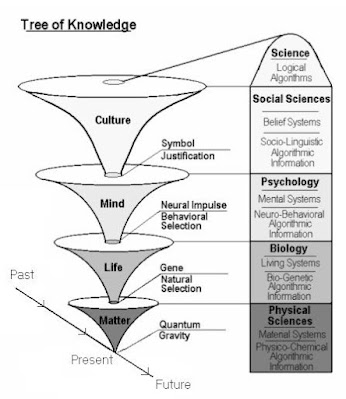Knowledge engineering (KE) is an artificial intelligence
subject that aims to incorporate expert knowledge into a formal automated
programming system in such a manner that the latter can produce the same or
comparable results in problem solving as human experts when working with the
same data set.
Knowledge engineering, more precisely, is a discipline that
develops methodologies for constructing large knowledge-based systems (KBS),
also known as expert systems, using appropriate methods, models, tools, and
languages.
For knowledge elicitation, modern knowledge engineering uses
the knowledge acquisition and documentation structuring (KADS) approach; hence,
the development of knowledge-based systems is considered a modeling effort
(i.e., knowledge engineer ing builds up computer models).
It's challenging to codify the knowledge acquisition process
since human specialists' knowledge is a combination of skills, experience, and
formal knowledge.
As a result, rather than directly transferring knowledge
from human experts to the programming system, the experts' knowledge is
modeled.
Simultaneously, direct simulation of the entire cognitive
process of experts is extremely difficult.
Designed computer models are expected to achieve targets
similar to experts’ results doing problem solving in the domain rather than
matching the cognitive capabilities of the experts.
As a result, knowledge engineering focuses on modeling and
problem-solving methods (PSM) that are independent of various representation
formalisms (production rules, frames, etc.).
The problem solving method is a key component of knowledge
engineering, and it refers to the knowledge-level specification of a reasoning
pattern that can be used to complete a knowledge-intensive task.
Each problem-solving technique is a pattern that offers
template structures for addressing a specific issue.
The terms "diagnostic,"
"classification," and "configuration" are often used to
categorize problem-solving strategies based on their topology.
PSM "Cover-and-Differentiate" for diagnostic tasks
and PSM "Propose-and-Reverse" for parametric design tasks are two examples.
Any problem-solving approach is predicated on the notion
that the suggested method's logical adequacy corresponds to the computational
tractability of the system implementation based on it.
The PSM heuristic classification—an inference pattern that
defines the behavior of knowledge-based systems in terms of objectives and
knowledge required to attain these goals—is often used in early instances of
expert systems.
Inference actions and knowledge roles, as well as their
relationships, are covered by this problem-solving strategy.
The relationships specify how domain knowledge is used in
each interference action.
Observables, abstract observables, solution abstractions,
and solution are the knowledge roles, while the interference action might be
abstract, heuristic match, or refine.
The PSM heuristic classification requires a hierarchically
organized model of observables as well as answers for "abstract" and
"refine," making it suited for static domain knowledge acquisition.
In the late 1980s, knowledge engineering modeling
methodologies shifted toward role limiting methods (RLM) and generic tasks
(GT).
The idea of the "knowledge role" is utilized in
role-limiting methods to specify how specific domain knowledge is employed in
the problem-solving process.
RLM creates a wrapper over PSM by explaining it in broad
terms with the purpose of reusing it.
However, since this technique only covers a single instance
of PSM, it is ineffective for issues that need the employment of several
methods.
Configurable role limiting methods (CRLM) are an extension
of the role limiting methods concept, offering a predetermined collection of
RLMs as well as a fixed scheme of knowledge categories.
Each member method may be used on a distinct subset of a
job, but introducing a new method is challenging since it necessitates changes
to established knowledge categories.
The generic task method includes a predefined scheme of
knowledge kinds and an inference mechanism, as well as a general description of
input and output.
The generic task is based on the "strong interaction
problem hypothesis," which claims that domain knowledge's structure and
representation may be totally defined by its application.
Each generic job makes use of information and employs
control mechanisms tailored to that knowledge.
Because the control techniques are more domain-specific, the
actual knowledge acquisition employed in GT is more precise in terms of problem-solving
step descriptions.
As a result, the design of specialized knowledge-based
systems may be thought of as the instantiation of specified knowledge
categories using domain-specific words.
The downside of GT is that it may not be possible to integrate
a specified problem-solving approach with the optimum problem-solving strategy
required to complete the assignment.
The task structure (TS) approach seeks to address GT's
shortcomings by distinguishing between the job and the technique employed to
complete it.
As a result, every task-structure based on that method
postulates how the issue might be solved using a collection of generic tasks,
as well as what knowledge has to be acquired or produced for these tasks.
Because of the requirement for several models, modeling
frameworks were created to meet various parts of knowledge engineering
methodologies.
The organizational model, task model, agent model,
communication model, expertise model, and design model are the models of the
most common engineering CommonKADS structure (which depends on KADS).
The organizational model explains the structure as well as
the tasks that each unit performs.
The task model describes tasks in a hierarchical order.
Each agent's skills in task execution are specified by the
agent model.
The communication model specifies how agents interact with
one another.
The expertise model, which employs numerous layers and
focuses on representing domain-specific knowledge (domain layer) as well as
inference for the reasoning process, is the most significant model (inference
layer).
A task layer is also supported by the expertise model.
The latter is concerned with task decomposition.
The system architecture and computational mechanisms used to
make the inference are described in the design model.
In CommonKADS, there is a clear distinction between
domain-specific knowledge and generic problem-solving techniques, allowing
various problems to be addressed by constructing a new instance of the domain
layer and utilizing the PSM on a different domain.
Several libraries of problem-solving algorithms are now
available for use in development.
They are distinguished by their key characteristics: if the
library was created for a specific goal or has a larger reach; whether the
library is formal, informal, or implemented; whether the library uses fine or
coarse grained PSM; and, lastly, the library's size.
Recently, some research has been carried out with the goal
of unifying existing libraries by offering adapters that convert task-neutral
PSM to task-specific PSM.
The MIKE (model-based and incremental knowledge engineering)
method, which proposes integrating semiformal and formal specification and
prototyping into the framework, grew out of the creation of CommonKADS.
As a result, MIKE divides the entire process of developing
knowledge-based systems into a number of sub-activities, each of which focuses
on a different aspect of system development.
The Protégé method makes use of PSMs and ontologies, with an
ontology being defined as an explicit statement of a common conceptualization
that holds in a certain situation.
Although the ontologies used in Protégé might be of any
form, the ones utilized are domain ontologies, which describe the common
conceptualization of a domain, and method ontologies, which specify the ideas
and relations used by problem solving techniques.
In addition to problem-solving techniques, the development
of knowledge-based systems necessitates the creation of particular languages
capable of defining the information needed by the system as well as the
reasoning process that will use that knowledge.
The purpose of such languages is to give a clear and formal
foundation for expressing knowledge models.
Furthermore, some of these formal languages may be
executable, allowing simulation of knowledge model behavior on specified input
data.
The knowledge was directly encoded in rule-based
implementation languages in the early years.
This resulted in a slew of issues, including the
impossibility to provide some forms of information, the difficulty to assure
consistent representation of various types of knowledge, and a lack of specifics.
Modern approaches to language development aim to target and
formalize the conceptual models of knowledge-based systems, allowing users to
precisely define the goals and process for obtaining models, as well as the
functionality of interface actions and accurate semantics of the various domain
knowledge elements.
The majority of these epistemological languages include
primitives like constants, functions, and predicates, as well as certain
mathematical operations.
Object-oriented or frame-based languages, for example,
define a wide range of modeling primitives such as objects and classes.
KARL, (ML)2, and DESIRE are the most common examples of
specific languages.
KARL is a language that employs a Horn logic variation.
It was created as part of the MIKE project and combines two
forms of logic to target the KADS expertise model: L-KARL and P-KARL.
The L-KARL is a frame logic version that may be used in
inference and domain layers.
It's a mix of first-order logic and semantic data modeling
primitives, in fact.
P-KARL is a task layer specification language that is also a
dynamic logic in some versions.
For KADS expertise models, (ML)2 is a formalization
language.
The language mixes first-order extended logic for domain
layer definition, first-order meta logic for inference layer specification, and
quantified dynamic logic for task layer specification.
The concept of compositional architecture is used in DESIRE
(the design and specification of interconnected reasoning components).
It specifies the dynamic reasoning process using temporal
logics.
Transactions describe the interaction between components in
knowl edge-based systems, and control flow between any two objects is specified
as a set of control rules.
A metadata description is attached to each item.
In a declarative approach, the meta level specifies the
dynamic features of the object level.
The need to design large knowledge-based systems prompted
the development of knowledge engineering, which entails creating a computer
model with the same problem-solving capabilities as human experts.
Knowledge engineering views knowledge-based systems as
operational systems that should display some desirable behavior, and provides
modeling methodologies, tools, and languages to construct such systems.
You may also want to read more about Artificial Intelligence here.
See also:
Clinical Decision Support Systems; Expert Systems; INTERNIST-I and QMR; MOLGEN; MYCIN.
Further Reading:
Schreiber, Guus. 2008. “Knowledge Engineering.” In Foundations of Artificial Intelligence, vol. 3, edited by Frank van Harmelen, Vladimir Lifschitz, and Bruce Porter, 929–46. Amsterdam: Elsevier.
Studer, Rudi, V. Richard Benjamins, and Dieter Fensel. 1998. “Knowledge Engineering: Principles and Methods.” Data & Knowledge Engineering 25, no. 1–2 (March): 161–97.
Studer, Rudi, Dieter Fensel, Stefan Decker, and V. Richard Benjamins. 1999. “Knowledge Engineering: Survey and Future Directions.” In XPS 99: German Conference on Knowledge-Based Systems, edited by Frank Puppe, 1–23. Berlin: Springer.

















